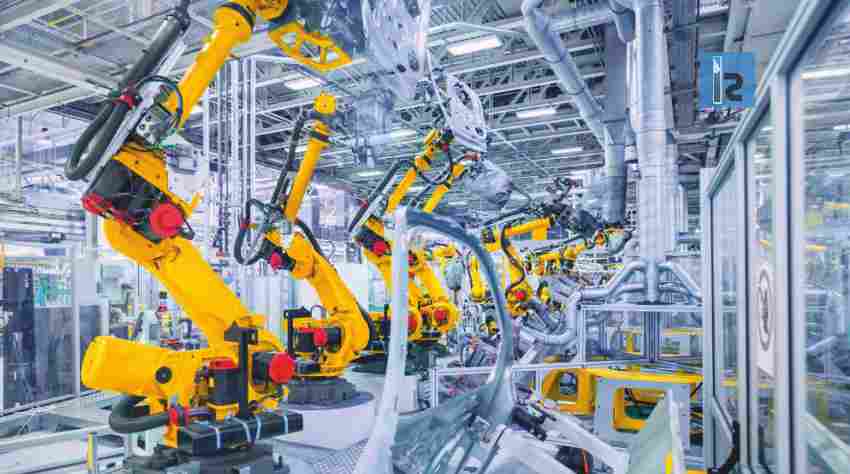DBT Bureau
Bengaluru, 2 February 2025
Manufacturing sector is likely to get a boost from the measures proposed in the Union Budget 2025. As India aspires to be the manufacturing hub of the world, several industry leaders feel the budget proposals are the steps in right direction.
Here are some of the comments:
1- Subhasis Majumdar – Managing Director – Vertiv
The Union Budget 2025 marks a transformative milestone in India’s journey towards becoming a global leader in manufacturing, technology, and innovation. We welcome the Government’s renewed focus on manufacturing through the National Manufacturing Mission, a key initiative that positions India to lead on the global stage. By focusing on building domestic capacities, integrating into global supply chains, and forming industry facilitation groups, this mission is set to significantly boost businesses and propel the ‘Make in India’ vision forward. Moreover, the integration of Industry 4.0 will unlock new opportunities by harnessing the immense potential of our youth’s skills and talent, laying the foundation for a more competitive, self-reliant India.
The Budget’s commitment to transformative reforms, particularly in the power sector, aligns perfectly with India’s ambition to enhance its global competitiveness. These efforts, coupled with a modern regulatory framework and a continued focus on ease of doing business, are vital to creating an environment where innovation and enterprise can flourish. This is a win for domestic production, a leap toward a greener future, and an essential step in establishing India as a global economic powerhouse.
Furthermore, the strategic investment in skilling, AI, and technological innovation is a testament to India’s commitment to nurturing talent and maintaining its edge in the digital revolution. The establishment of National Centres of Excellence for skilling and the PM Research Fellowship scheme for IITs and IISc will ensure India remains at the forefront of global advancements in AI and deep tech. As we move forward, this budget sets the stage for a more dynamic, inclusive, and innovation-driven India—ready to lead the world in the digital and technological age.
2- Ankit Kumar, CEO, Skye Air
The Union Budget’s focus on startups and MSMEs, with initiatives like the ₹10,000 crore fund, reaffirms India’s commitment to Atmanirbhar Bharat. A pivotal move is the transformation of India Post into a vast public logistics network, with 1.5 lakh rural post offices set to drive rural economic growth. By leveraging this reach, the government is laying the foundation for a seamless logistics system that empowers MSMEs and startups nationwide.
Additionally, tax benefits for individuals are expected to boost consumption, accelerating the growth of e-commerce and quick commerce, which will, in turn, fuel the adoption of drone logistics. This will optimize last-mile deliveries and drive efficiencies across industries, enhancing India’s position as a global leader in digital commerce. A key highlight is the reduction in Basic Customs Duty (BCD) on lithium imports, making lithium-based products more affordable. This will boost electric mobility, energy storage, and sustainable tech innovation, leading to cost-effective manufacturing.
Together, these measures strengthen the startup and MSME sectors, positioning India as a powerhouse in logistics, digital commerce, and sustainable innovation, fostering a self-sustaining, globally competitive economy.
3- Saurabh Rai, CEO, Arahas Technologies
The announcement of the National Geospatial Mission is a promising move towards modernizing India’s infrastructure and technological capabilities. As part of the government’s push for self-reliance, this mission is designed to enhance India’s geospatial data capacity, facilitating better urban planning, resource management, and disaster response. By leveraging cutting-edge technologies like AI and quantum computing, the mission is expected to drive advancements in areas such as agriculture, transportation, and climate monitoring, contributing significantly to India’s vision of a Viksit Bharat (developed India).
This initiative aligns with India’s broader objectives of strengthening its technological foundation, fostering innovation, and reducing dependence on foreign geospatial data sources. Additionally, the emphasis on a collaborative, data-sharing approach with various stakeholders—including academia, industry, and government agencies—will enable sustainable, inclusive growth, benefitting both individuals and MSMEs. In the current economic landscape, investing in geospatial technology will not only create new opportunities but also ensure that India is well-prepared to tackle future challenges, reinforcing its global position in technology and self-reliance. For taxpayers, rationalizing taxes and enhancing transparency will be key areas to watch, ensuring greater economic benefits for the common man.
4- Sanjay Kumar, CEO, Geospatial World
The National Geospatial Mission is a transformative initiative that supports India’s goal of becoming a $5 trillion economy by 2030 and realizing the vision of Amrit Kal 2047. In alignment with the Union Budget 2025’s focus on digital infrastructure and innovation, this mission aims to create robust geospatial knowledge infrastructure (GKI) that will enhance critical sectors like infrastructure, energy, agriculture, health, and industry. By fostering advancements in technologies like AI, space, and digital twins, it will help grow India’s geospatial industry to ₹1 lakh crore by 2030, with a similar target for exports, contributing to a ₹2.5 lakh crore national geospatial economy.
In line with the Union Budget’s emphasis on commercialization and indigenization of technology, the mission drives the development of domestic geospatial solutions. Supported by strong leadership from the Prime Minister and ministries like DPITT, DoLR, MoHUA, MoRTH, and Survey of India, it presents a significant opportunity for the geospatial and space sectors to contribute to national development. With a far-reaching socio-economic impact, the mission will boost productivity, enhance the speed of mission mode programs, and strengthen India’s global technological leadership.
5-





















